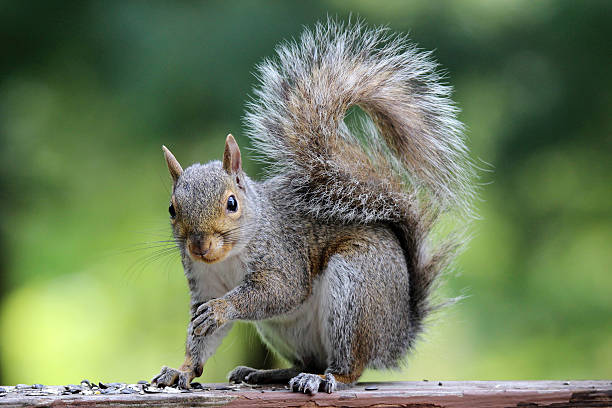One of the most common animals wildlife removal in Oakville is asked to help with are squirrels. The fluffy-tailed species is known for getting into mischief, but that is part of what makes them so fun to watch.
One of the most entertaining characteristics of a squirrel is the tail. The bushy appendage might seem rather useless at first glance, but the longer you watch squirrels playing and interacting with each other, the truth becomes clear.
The squirrel tail is a necessary device for communication. The animals use it to express joy, fear, apprehension, etc. The tail has three primary uses.
1. Mating Season
During squirrel mating season, you will see a rather unusual motion in the tail of male squirrels. When trying to attract a mate, the male animal will shake, tremble, or shiver its tail. Some experts may refer to this motion as a type of dance.
The movement is a way of checking to see if the male is safe to approach the female. The male will remain at a distance, quiver its tale, and acknowledge the female’s response. If the female seems okay, the male will move a little closer and repeat the process.
2. Alarmed Responses
A squirrel will also flick its tail when startled or angry. The animal might also combine the tail-flick with chittering noises. Natural predators of the squirrel, such as humans, bobcats, foxes, coyotes, etc., will often cause the animal to go into a panic. The tail-flick is a way for the animal to communicate that it sees the predator and will flee if it gets closer.
The squirrel might also flick its tail to communicate warnings to other squirrels in its territory. The flick is a way to tell other squirrels to watch out or stay away from their food.
3. Communication
Ultimately, the tail movement is how squirrels communicate with each other. Sure, you might hear chittering noises coming from the trees on occasion, but most often, squirrels are relatively quiet.
The tail is the primary communicator; it expresses apprehension, joy, interest, play, anger, etc. All emotions that people can express verbally, a squirrel expresses through the nonverbal action of a tail-flick.
Wildlife experts can become relatively adept at reading squirrel tail movements. They might be able to ascertain what direction a squirrel will run or if it is readying an attack. Knowing how to read these tail cues is vital to the safe and effective removal of wildlife.
Many people look at a squirrel and see a vulnerable, cute, playful animal. While much of that is true, squirrels are still wild and unpredictable. If scared or threatened, a squirrel can become defensive and may manage to hurt a person or predator.
Squirrels can also be incredibly destructive if they get into manmade structures. They will chew through wood, insulation, and wires, trying to build their nests and file their teeth.
Do you have a squirrel population near your home? Do you feel like a squirrel is already nesting in your home? If so, contact Skedaddle Humane Wildlife Control. We will send a wildlife technician to your Oakville property to look for signs of an infestation. If the assessment warrants further action, the expert will provide a list of services and an estimate for you to review. If everything is acceptable, you can sign the service contract, and the expert will begin work to free your home of squirrels or other wildlife.




